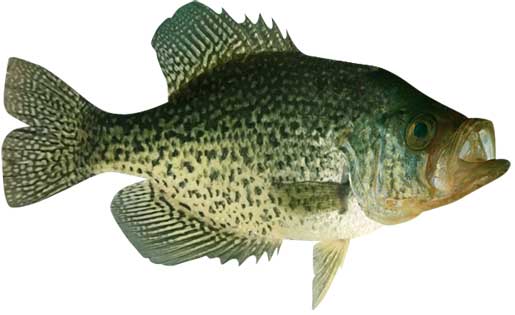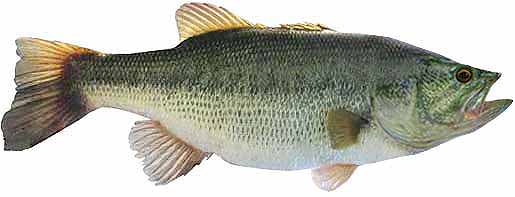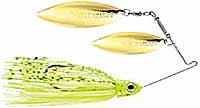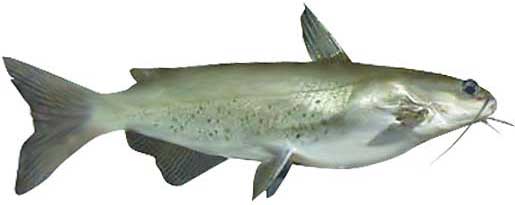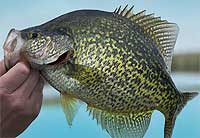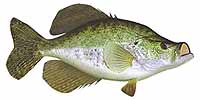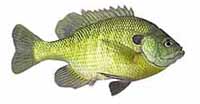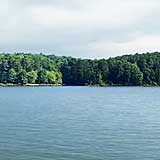Fishing Report For Lake Crabtree, NC
By Rick Seaman
August 27, 2025
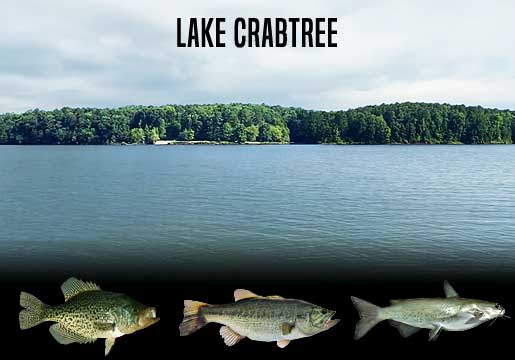
Fishing Reports
Popular Fish Species Lake Crabtree, NC
Black Crappie
Current Report: Good To Very Good
This is a year-round fishery for nice crappie. Both black crappie and white crappie reside here, and black crappie are the main attraction.
SUMMER. Water temperatures are currently in the high 70's, and crappie fishing has been very good. Now that Summer is coming to an end, crappie are moving shallow again, and will stay there through the first weeks of Fall.
FALL. Baitfish, are beginning to migrate into shallow flats, coves and bays, which draws crappie into these areas. Here they will feed heavily in preparation for the cold Winter. Small spoons, along with minnows, hair jigs, and crappie jigs, are good options during this feeding marathon. Late fall starts the migration deeper toward winter holding areas, for both crappie and baitfish. Small flutter spoons are ideal during this transition
WINTER. Once the shallows start cooling rapidly, crappie migrate to deeper holding areas, mostly off shore. At this time they are typically caught using a very slow presentation, in 10 to 12 feet of water.
SPRING. In early Spring, crappie begin staging in 5 to 8 feet of water, just outside spawning bays and shallow flats. This is prime time to be on the water, as crappie move shallow to spawn. At that time, they are typically caught in 1 to 4 feet of water. Docks, brush, wood and vegetation are where most anglers are catching good numbers using small crappie jigs or live minnows. After the spawn, crappie move outside the spawning area and hold on the closest cover. Once they move off the beds, they again move to outside areas with cover or sharp depth changes. Light tackle with 4 lb to 8 lb line is a popular choice.
Largemouth Bass
Current Report: Fair To Good
SUMMER. Water temperatures are still in the high 70's, and bass are holding at varying depths, as long as there is shade and cover. Bass are feeding shallow early and late in the day, where they are being caught on topwater, crankbaits and swimbaits. Largemouth bass here feed on gizzard shad, threadfin shad, small sunfish and crawfish. .
FALL. Fall is arriving and bass here are following schools of baitfish into shallow areas where swimbaits, and slow-rolled spinnerbaits have been successful in prior years. As deeper water cools, bait and bass move out to edges of vegetation, channel edges, small points and humps where worms and flutter spoons are often ideal baits.
WINTER. Winter will isolate them around slightly deeper cover, structure, flats, points and creek edges. They can be found from 8 to 12 feet deep. Small lures and a slow presentation are key to enticing bites. Here they hold, feeding less frequently, awaiting warmer water to return in Spring.
SPRING. Once water temperatures rise into the low 60's, largemouth will move from deep wintering holes, to shallower water just outside spawning areas. Swim jigs, squarebill crankbaits, spinnerbaits and vibrating jigs typically get bites just away from the shoreline. At this time they are feeding aggressively and preparing for the spawn. Once water temperatures warm into the mid to high 60's, they will move into 1 to 4 feet of water, and create nests, then lay their eggs. Immediately afterwards, females move to deeper water and males remain to guard the eggs, and then the fry. After a couple weeks, the males also move to slightly deeper water. Crankbaits, vibrating jigs, plastic worms and swimbaits are catching bass during this period.
Channel Catfish
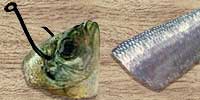

Current Report: Fair To Good
SUMMER. As Summer ends, slow-moving water, around Haleys Branch and Stirrup Iron Creek, draw catfish to feed. Now they beginning to react to the weather impact of Fall. Reports indicate the most successful anglers are using nightcrawlers, cut bait or shrimp. Fishing late in the day is producing some bites, as this is their prime feeding time.
FALL. Fall is one of the best times of year for catching channel catfish. They migrate away from current to moderately deeper holes around the main channel of the lake. They remain in these areas and feed aggressively in preparation for Winter.
WINTER. In Winter, the channel cats gather in deeper and go virtually dormant, especially if water cools into the 40's. They hole up in pockets from 10 to 12 feet deep and await warmer water. Slow presentations, especially cut bait, can still entice strikes.
SPRING. In Spring, when water temperatures rise into the high 40's, channel catfish start their migration to relatively shallow cover until water warms into the mid 70's, at which time they begin the spawn process. Anglers are using a variety of baits with slip sinkers, 3-way rigs, or Carolina rigs.
Fish species to fish for...
Guide to fishing for largemouth bass, channel catfish, blue catfish, black crappie, white crappie and bluegill at Lake Crabtree in North Carolina.
Fishing Video
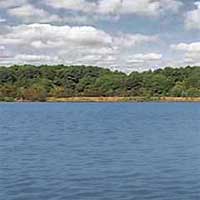
Lake Crabtree is a small, 520 acre-fishing lake that has about 5 miles of shoreline. No gas-powered boats are allowed on the lake, so it receives limited fishing pressure. There is a fishing pier and a fishing platform with handicap accessibility.Bass, crappie, bluegill and catfish reside here.
Primary fish species to catch
Click images for fishing tips and details about each species.
Today's Weather & Forecast
Public Boat Launch Ramps & Landings
Click here for boat ramps.
Fishing License
Click here for a North Carolina Fishing License.
Map - Fishing & Access
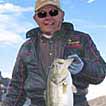
Rick Seaman is a fishing enthusiast with over five decades of fishing experience, a retired tournament fisherman, author of numerous published articles on fishing, and co-author of the book "Bass Fishing - It's not WHAT you throw, It's WHERE you throw it".
Contact Information
Lake Crabtree County Park
1400 Aviation Parkway
Morrisville, NC 27560
919 460-3390
Fishing lakes in each state
082725
Lake Crabtree, NC Report
NORTH CAROLINA


Fishing for bass, crappie, bluegill and catfish in northeast NC


